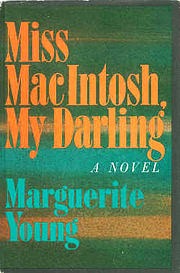My whole life changed when I
decided not just what I’d like to do, but when I decided who I was committed to
being and having in my life.
Tony Robbins
Last year
Holly (name changed) took a workshop
from me on “dealing with difficult people”.
At the end of the day she confided that the big take-away was that she is a difficult person – not her
clients. With remarkable candor she
confessed that she doesn’t like people.
What made Holly’s revelation surprising is that she’s a psychotherapist
in private practice.
She
explained that she’s fine for the fifty-minutes insurance pays for, but it’s
the few minutes prior and after the session that she dislikes. She asked if I could teach her to “like”
people. Given that she’s a therapist,
this was one of the oddest requests ever asked of me! However, because of my own family story, it
was easy for me to empathize with Holly as she tried to make sense of her
impatience with and dislike of people.
Both my
grandfathers were dead by the time I was born. My paternal grandmother, who was
the great love of my childhood, was a prison guard for thirty-five years. My maternal grandmother was such a miserable
creature that not even her own cat would sit on her lap! Neither grandmother had any friends.
My parents
were fun, funny people who had no friends because people were not to be
trusted. My brother and I weren’t even allowed
to go trick-or-treating as my parents viewed it as a form of “begging.”
Although my
parents and grandmothers didn’t have any friends, they all loved to sit on park
benches or by a window and just watch people.
They enjoyed imagining what kind of lives people lived (most were deemed
unhappy).
As a child I
learned about people from a distance and from that distance I longed for the
chance to like people. Because I spent
most of my childhood on a park bench, I could have grown up to become a hermit
or a people-loathing therapist! Instead,
I traveled the world, embraced adventure, entered ministry, and became a
teacher, coach and speaker.
I’m
fascinated with people and, yet, in my communication coaching I’ve encountered
scores of individuals like Holly who claim to not be interested in people.
I wasn’t
able to give Holly a tip-sheet on “6 Easy Steps To Liking People.” While I could tell her why she should like people (success
in life = the people you meet + what you create together – thank you Keith
Ferrazzi), I couldn’t tell her how to
like them.
In our
coaching sessions I worked to help Holly develop a curiosity for people since curiosity
is at the heart of liking. I gave her a
list of questions that I hoped would serve as a “whack on the head” to help her
clarify her feelings of dislike. Here
are my: Top Ten Questions To Generate Curiosity
For People.
1. Why don’t you like people?
And since your first answer is just the superficial reason, what is the real
reason? Which is another way of asking,
what are you afraid of?
2. What is the best conversation you ever had with a stranger?
3. What makes a person boring for you?
4. What makes you boring to people?
5. Do you want people to like you?
6. Do you have anything to give to people that would benefit them?
7. In what ways is your life richer for “excluding” people? (yes, trick question)
8. Who was the kindest person to you?
9. Who was the nastiest?
10. Who knew you the best – the kindest or the nastiest?
As a
therapist, Holly was intrigued with my questions and as “Holly” she was
resistant to them. Through our coaching
sessions, Holly realized that she didn’t like people because she thought they
wouldn’t like her – the non-professional “Holly.”
In one
telling, throwaway line, Holly mentioned that her mother used to tell her that
she was “an uninteresting girl.” Holly’s
fear was that outside a professional setting, people wouldn’t find her
interesting and because of that belief Holly pushes people away before they can
push her away.
As Holly
made her way through the questions, it became clear to both of us that she had
an old-fashioned superiority complex and that’s why she erupted into
condescending fits with people. Fear
made her a harsh judge and judging gave her safety. But, it was a “safe” place that prevented her
from being truly interested in people because if you believe you’re better than
most everyone else why would you be interested in them?
Sadly, in
the end, Holly admitted she was content not liking people. While this was a stunning admission for a
therapist to make, as with many people, fear won out. Although she was paid to hear people’s
stories she was afraid to see her story in theirs and so see her worth.
Here’s the
thing – although I wasn’t able to tell Holly how she could like people, I can
tell you that if you want to become more fully “you” then you have to want to
know more about people.
You have to
stand with your shoes off in the presence of the whack-a-do mystery of other
people. You have to risk finding shards
of your story in their story. You have
to become curious. And when you become
curious then you will find the boy on a park bench sitting alongside a not
uninteresting girl. It’s the only way
you can ever really hope to “like” people.





